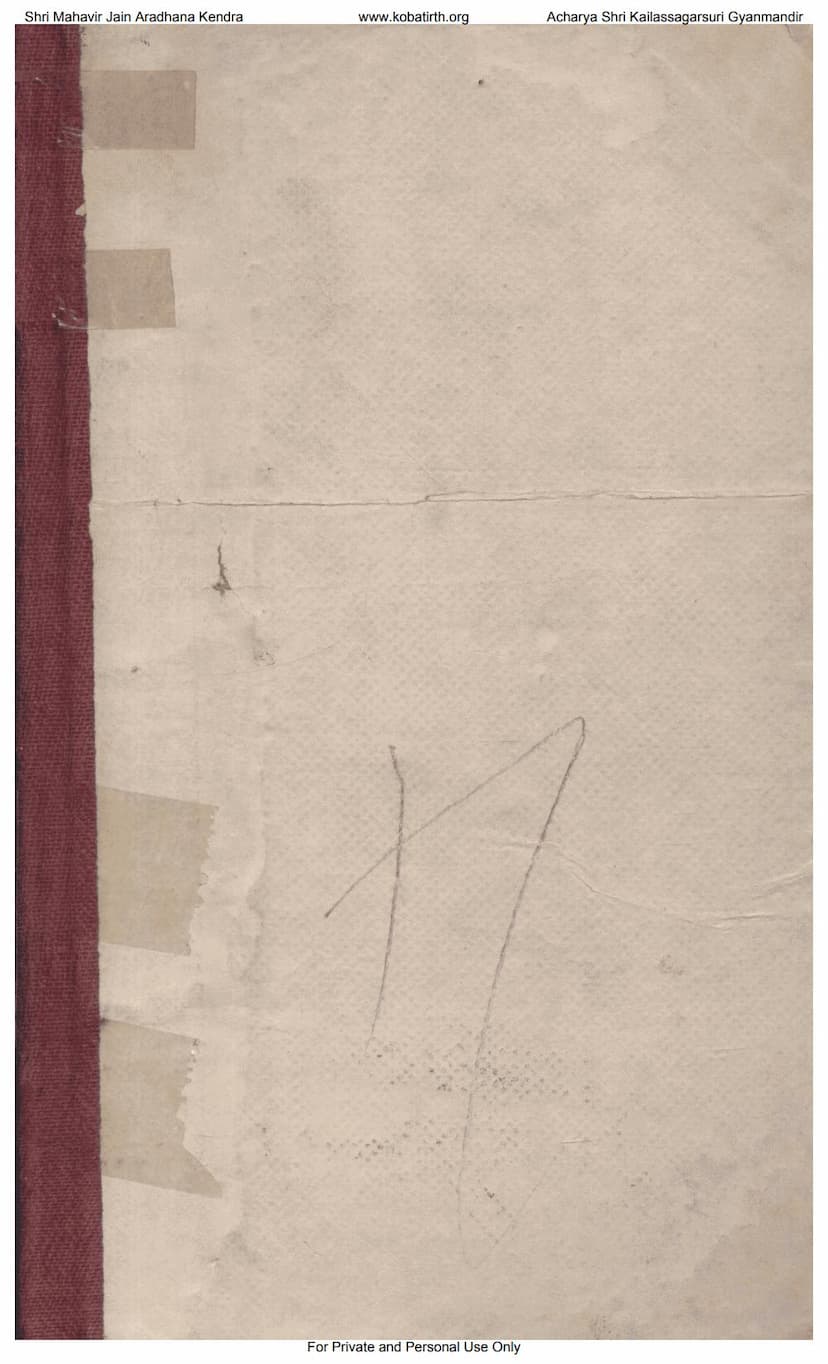Dharm Sharmabhyudayam
Added to library: September 1, 2025
Loading image...

Summary
This document is the catalog listing and the initial pages of the Jain text "Dharmasharmabhyudaya" by Harichandra. The text is part of the Kavyamala series, volume 8, published by the Nirnaya-Sagara Press in Bombay in 1888. It was edited by Pandit Durgaprasad and Kasinath Pāndurang Parab.
The initial pages include:
- Title page: Clearly states the title, author, editors, publisher, and year of publication. It also notes that it is for "Private and Personal Use Only".
- Table of Contents (Vishayanukramah): This is a detailed breakdown of the 21 chapters (Sargas) of the work. It outlines the content of each chapter, which primarily narrates the life story of the 15th Jain Tirthankara, Dharmānātha, from his birth to his liberation (Nirvana).
- The table of contents reveals a rich narrative covering descriptions of various places, kings, queens, celestial beings, religious rituals, philosophical discussions, and the Jain principles.
- Key events mentioned include:
- Descriptions of geographical features like Jambudvipa, Kanakadri, Bharatavarsha, Aryavarta, Uttar Koshala, and the city of Ratnapura.
- The lineage and description of King Mahasena of Ratnapura and his queen Suvrata.
- The divine prophecy of Dharmānātha's birth.
- Dharmānātha's past lives, including a detailed account of King Dasharatha of Vatsa country and his renunciation.
- The divine descent of celestial maidens to attend the queen.
- Dharmānātha's birth, infancy, youth, and accession to the throne.
- His marriage to the princess of Kundina.
- His renunciation, asceticism, attainment of omniscience (Kevala Jnana), and preaching of Jain doctrine.
- Descriptions of seasons, floral offerings, water sports, and evening scenes.
- Beginning of the First Chapter (Prathama Sarga): The text then commences with the first chapter, which includes mangalācharaṇa (auspicious invocations) and descriptions of virtues and vices, followed by geographical descriptions. The verses are in Sanskrit and are rich in poetic language and imagery.
- Notes on the Author: There's a note (marked as '1.' in the commentary section) about the author, Harichandra Mahakavi. It discusses the uncertainty surrounding his exact time period, mentioning that he is contemporary with or influenced by poets like Magha. It also states that the epic is 21 cantos long and describes the life of the 15th Tirthankara, Dharmānātha, from birth to Nirvana.
- Commentary/Notes: Some Sanskrit notes explain specific words or concepts within the verses, often providing alternative interpretations or clarifications, particularly regarding Jain terminology and philosophical concepts like the "Ratnatraya" (three jewels).
In essence, the document provides the foundation for a comprehensive epic poem detailing the life and teachings of the 15th Jain Tirthankara, Dharmānātha, authored by Harichandra, a significant figure in Jain literature.